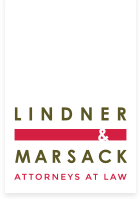By Alexandra “Sasha” Chepov
The Department of Labor (DOL) recently issued an opinion letter providing clarification as to how an employer is to calculate an employee’s leave entitlement under the Family and Medical Leave Act (FMLA) when such leave is taken during a week that includes a holiday.
The FMLA entitled eligible employees of covered employers to take unpaid job-protected leave for a qualifying family and medical reason with continuation of group health insurance coverage under the same terms and conditions as if the employee had not taken leave. Eligible employees are eligible to take up to 12 workweeks of leave in a 12-month period for various qualifying reasons, and up to 26 workweeks of leave in a single 12-month period to care for a covered servicemember. 29 U.S.C. § 2612(a)(1), (2). Under certain circumstances, an employee may use FMLA leave intermittently, meaning, the employee may use such leave in separate blocks of time, or on a reduced leave schedule by reducing the time worked in a day or week. 29 U.S.C. § 2612(b)(1); 29 C.F.R. § 825.202(a).
Where an employee takes FMLA leave for less than one full workweek, the amount of FMLA leave used is determined as a proportion of the employee’s actual workweek. For example, if an employee who would otherwise work 40 hours per week takes off 8 hours, the employee uses one-fifth (1/5) of a week of FMLA leave. 29 C.F.R. § 825.205(b)(1).
When a holiday falls during a week than an employee is taking a full workweek of FMLA leave, the entire week is counted as FMLA leave. 29 C.F.R. § 825.200(h). For example, an employee who works Monday through Friday takes leave for a week that includes the Fourth of July on Thursday would use one week of leave, rather than 4/5 of a week. However, if a holiday falls during a week when an employee is taking less than full workweek of FMLA leave, then the holiday is not counted as FMLA leave, unless the employee was scheduled and expected to work on the holiday and used FMLA leave for that day.
In sum, the DOL opinion letter clarifies that the actual workweek, for purposes of calculating FMLA leave taken, includes the day of the holiday. If a holiday were to be subtracted from the workweek when calculating the amount of FMLA leave used in a partial week of leave, this would result in an impermissible reduction of the employee’s leave entitlement because the employee would have to use a larger amount of FMLA leave when needed.
Therefore, under the FMLA, the employee’s normal workweek is the basis for the employee’s leave entitlement. If the holiday occurs during an employee’s workweek, and the employee works part of the week and uses FMLA leave for part of the week, the holiday does not reduce the amount of the employee’s FMLA leave entitlement unless the employee was required to report for work on the holiday. If the employee was not expected or scheduled to work on the holiday, the fraction of the workweek of leave used would be the amount of FMLA leave taken (which would not include the holiday) divided by the total workweek (which would include the holiday).
